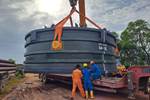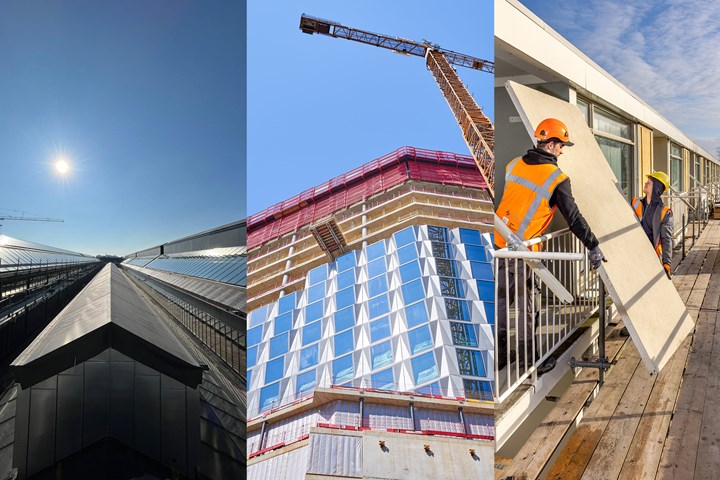Duplicor biocomposite cladding aids redevelopment of ABN AMRO office building in Amsterdam
Chosen for low CO2 footprint, RC value >9, fire resistance, light weight and high strength, Duplicor façade structures are key to two-story extension.
Facade elements for redevelopment of the ABN AMRO building use Duplicor biocomposites. Source | Duplicor
Office redevelopment of Dutch bank ABN AMRO (Amsterdam) has begun. When completed in 2027, it will house almost 11,000 employees and be more sustainable than required by the Paris Climate Agreement — 3 years ahead of ABN AMRO's own target. A key part of this redevelopment is enabled by Duplicor (the biocomposite brand of Holland Composites, Lelystad, Netherlands) composite façade structures, extending the office complex with a two-story topping. The biocomposite prepreg panels were chosen for their sustainability, low CO2 footprint, high insulation (RC value >9) and light weight combined with high structural strength.
ABN AMRO has set the ambition for all its offices to comply with the Paris Climate Agreement by 2030. The aim of this redevelopment is to renew, expand and “future proof” the existing building, instead of opting for new construction. In addition, 10,500 square meters of solar panels will be installed on the roof and façade to significantly reduce energy consumption.
The Duplicor façade elements will be faced with clay-fired and glazed tile finish to preserve the characteristic architectural value of the original building. In addition, Duplicor’s high fire safety — meeting fire standard B S1 D0 according to NEN-EN 13501 SBI — means there is no flame spread in case of fire.
Duplicor is proud to have worked in collaboration with property developer Edge Technologies, the original building architects Broekbakema, project architects BTC and project manager BAM Bouw en Techniek, to help achieve this renewed green home for ABN AMRO employees.
Related Content
-
Sinonus launches energy-storing carbon fiber
Swedish deep-tech startup Sinonus is launching an energy-storing composite material to produce efficient structural batteries, IoT devices, drones, computers, larger vehicles and airplanes.
-
Dawn Aerospace reusable rocket-powered aircraft flies twice in one day
Eighth and ninth flights of composites-intensive Mk-II Aurora reach an altitude of 63,000 feet, demonstrates same-day reusability capability for rocket-powered systems.
-
Rocket Lab begins installation of large AFP machine for rocket production
The 99-ton AFP machine, custom-designed and built by Electroimpact, is claimed to be the largest of its kind, expecting to save around 150,000 manufacturing hours in the Neutron rocket’s production process.














.jpg;maxWidth=300;quality=90)

